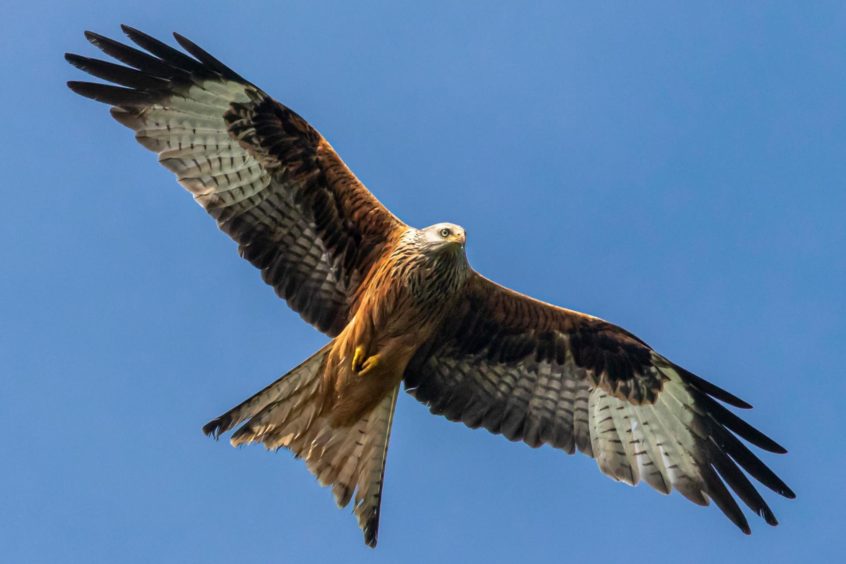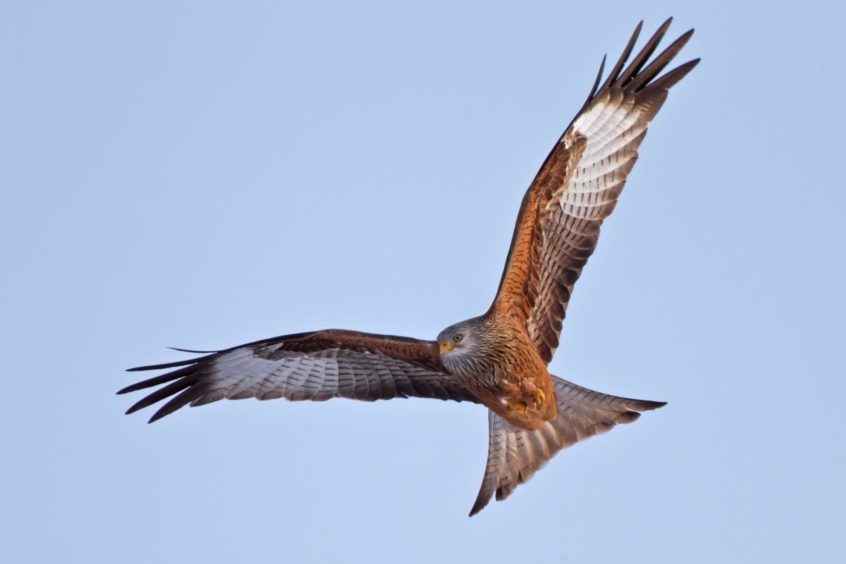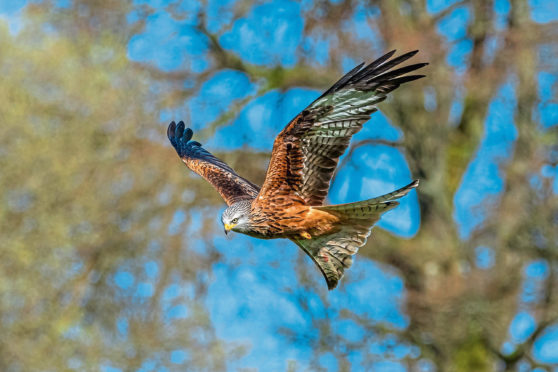Wander down any of the small roads to the west of Aberdeen around Garlogie, Echt or Drumoak, or take a drive from Inverness to Dingwall, and there is every chance you will spot a medium-sized bird of prey soaring on slender wings and using casual flicks of its deeply forked tail to give direction and purpose.
It is a red kite, a wonderfully graceful bird that has returned to its former haunts in the north thanks to an ambitious reintroduction programme. For me, red kites are among our most elegant birds of prey, with their long wings and stream-lined bodies delivering an impression of underlying fragility.
Red kites were formerly widespread in Scotland and in historical times were a common sight, given their propensity to scavenge like gulls around communal rubbish tips.
They were also seen as a threat by game interests and by the early 19th century the persecution had become intense. In Glen Garry estate alone records show that 275 red kites were slaughtered as ‘vermin’ between 1837 and 1840. By the end of the 19th century the kite had virtually disappeared from Scotland for good, no more to be seen in its former haunts stretching from Dumfries to Deeside, and beyond.

But now they are back, home where they belong in the fields and woods of Scotland after an absence of well over a hundred years following a series of reintroduction schemes. Since the start of the 1990s, successful reintroductions have taken place on the Black Isle north of Inverness, Doune in central Scotland and in Dumfries & Galloway.
The most recent stage of the project was the release from 2007 to 2009 of 101 young red kites near Aberdeen. Many of these young birds came from the Chilterns in southern England – an area itself where kites were first reintroduced a few decades ago and whose population is now flourishing.
The Aberdeenshire kites first started breeding in 2009 and their numbers have increased annually ever since.

It is now anticipated that the various separate Scottish populations will link up to provide a relatively continuous nationwide distribution. There are already signs that this is happening with birds from the central Scotland and Black Isle release schemes having already bred in Aberdeenshire in recent years. Furthermore, there are indications that the kite populations of central Scotland and Aberdeenshire are now joining-up in Angus.
Indeed, only recently I saw pair of red kites when driving between Fettercairn and Clatterin’ Brig on the Cairn O’ Mount road. They were magnificent to watch, soaring together in mutual harmony and a reminder of nature’s power to bounce back.
It is important not to be complacent and threats do remain, but the future for the red kite looks assured. These special birds have been sorely missed and it is entirely appropriate that the hand that brought about their demise has in these more enlightened times aided a quite remarkable resurrection.
Info
The kite has the peculiar habit of collecting old scraps of material to add to the nest. One nest in the 19th century was found to contain a ‘pair of ragged stockings…. and part of an old shirt’.










